Validation of Bern CCI + other variables; retrospective analysis
Multicentric retrospective validation study of the Bern Comprehensive Complication Index
Background
In an attempt to standardise the reporting of perioperative complications several classification systems have been developed, which have all their pitfalls. The most widely used is the Clavien Dindo classification system (CDS). First developed in 1992 and modernised in 2004, the CDS reports life-threatening and permanently disabling complications. A potential shortcoming is that it only reports the most severe complication of the respective patient, according to the type and degree of invasiveness of the therapy given, but it does not include less severe complications or the total number of adverse events per single patient over time. It therefore underestimates the true overall postoperative burden to patients.
The CAMUS (Complication reporting After Major Urological Surgery) collaborative have developed a Bern Comprehensive Complication Index (Bern CCI) which addresses this issue. The novel index calculates a score between 0 (no complication)-100 (death) and integrates every complication suffered in the 90-day post-operative window. It allows for more accurate complication reporting and especially for longitudinal assessment of complications over time. Furthermore, the Bern CCI is calibrated so that no complication can be reported as >100 (worse than death), a concern with some indices. Morbidity and mortality assessment and reporting is a mandatory part of the surgical audit.
This study will provide data to establish whether the Bern CCI should replace ‘conventional’ complication reporting for major urological procedures. We anticipate that the Bern CCI will be able to calculate risk for complications for the 90-day and predict complications in the 12-month post-operative periods. Furthermore, the entirety of mid-to long-term complications and hence long-lasting morbidity of the patients can be assessed
We anticipate that the Bern CCI will provide a the most accurate assessment of risk to date following major urological surgery.
Aim/Method
CAMUS will compare the performance of the Bern CCI compared to to the original CCI and the Clavien Dindo score across major urological surgery (nephrectomy (partial and radical), nephroureterectomy, cystectomy, prostatectomy and retroperitoneal lymph node dissection) within a multi-centre retrospective cohort study
Study Aims
To test applicability and validity of the Bern Comprehensive Complication Index, especially when comparing different surgical approaches (open vs minimal-invasive surgery), or different patient characteristics (e.g. with and without prior chemotherapy).
The ambition is that the Bern Comprehensive Complication Index will be considered for standardised reporting of complications after major urological surgeries.
Outcome Measures
Primary Objectives: Applicability and Validity of the Bern Comprehensive Complication index in complication reporting after major urological surgeries.
Secondary Objectives: Applicability and Validity of the Bern Comprehensive Complication index when comparing different surgical approaches (open vs minimal-invasive surgery), or different patient characteristics (e.g. with and without prior chemotherapy).
Validation process
(“Taking direct measurements of the studied parameters at different sites and then comparing them with the computed values”)
The aim of this study is to validate the previously derived Berne Comprehensive Complication Index (CCI) in an independent cohort. For each patient a score will be calculated and compared with the recorded complication incidence. Global performance will be assessed by generating Receiver Operating Curves and calculating the Area Under the Curve. Calibration curves will be used to assess performance across the score range. Analyses will also be conducted by centre and geographical site.

